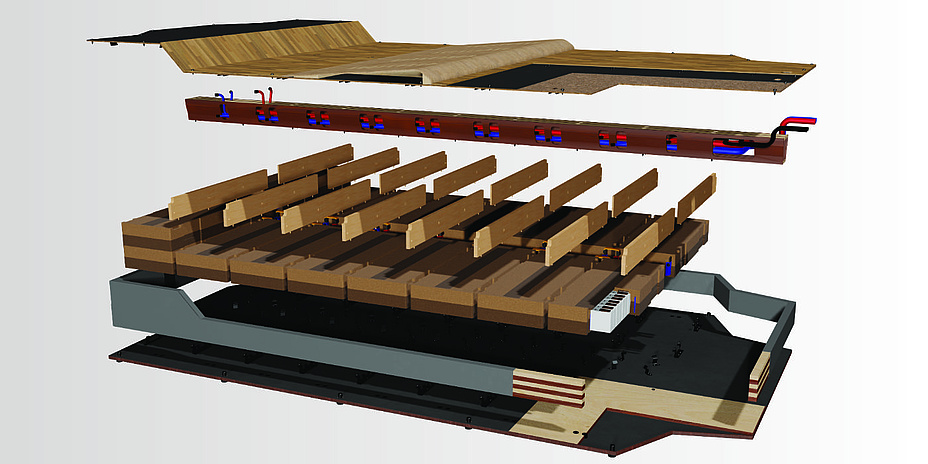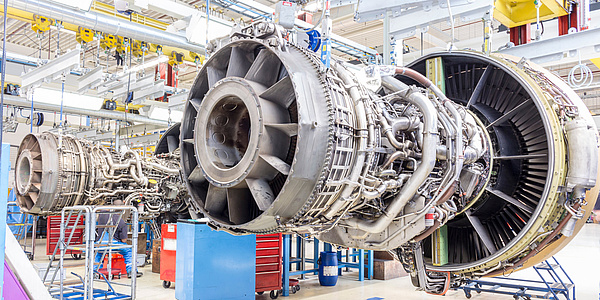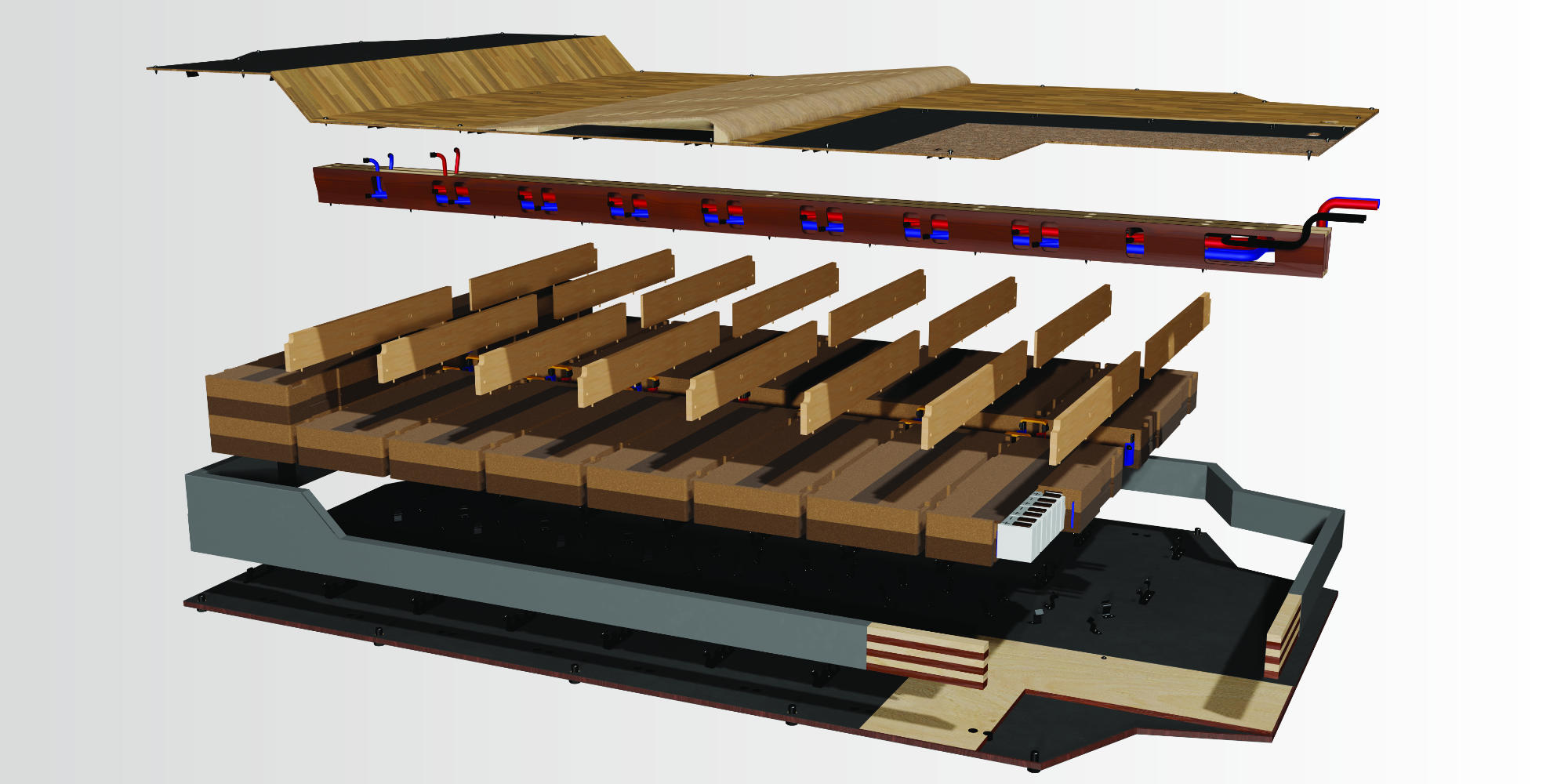Protective Housing in Wood-Steel Hybrid Construction

Electric cars are very resource-efficient in operation, but the battery and associated components still generate a large ecological footprint during production. In the Bio!Lib project, a team led by Florian Feist from the Institute of Vehicle Safety has succeeded in manufacturing the protective housing of electric car batteries from wood and thin sheet steel instead of aluminium. The environmental impact of this enclosure is significantly lower, and in some cases it even performs better in deformation and fire protection tests.
The battery housing is of crucial importance for the safe operation of electric cars. In the event of a crash, it protects the battery elements from excessive deformation and thus from a battery fire. The housing usually consists of extruded aluminium profiles with a chambered structure. Such enclosures are safe, but very energy-intensive to manufacture.
Similar intrusion values to the Tesla Model S
“For this reason we have dispensed with aluminium in our Bio!Lib project,” says Florian Feist. “Instead, we use a very thin steel skin whose chambers are filled with wood. The steel skin is welded directly in the presence of the wooden core.” Wood has the advantage of consisting of tiny cells that collapse under high pressure and can therefore absorb a lot of energy in the event of a crash. The underbody and lid are also made of this steel-wood composite, and the inside of the battery is reinforced with rib-like cross struts. “We were amazed ourselves at how well our housing performed in a simulated crash,” says Florian Feist. In the critical pole crash test, in which vehicles or components collide with a round steel pillar at high speed, the intrusion values of the Bio!Lib housing are almost identical to those of the aluminium battery housing of the Tesla Model S.
Cork as fire protection
In addition to impact protection, fire and heat resistance are crucial functions of battery housings. The researchers also used a renewable raw material as a fire protection material: cork. “When cork is exposed to very high temperatures, it chars,” explains Florian Feist. “Carbonisation leads to a sharp drop in the already relatively low thermal conductivity, which protects the structures behind it.” This also applies to the interior of the vehicle. In a so-called pyrotechnic test, which simulates a battery fire, the battery cover withstood temperatures of over 1300 degrees Celsius and bombardment with aluminium and copper particles. The cork-insulated Bio!Lib housing even outperformed the Tesla competition in this test: on the side facing away from the fire, the temperature was around 100 degrees Celsius lower.
To assess the sustainability of their metal-wood hybrid design, the researchers worked together with the Wegener Center for Climate and Global Change at the University of Graz to determine the environmental impact of all materials and components used – from the use of primary energy, water and land to the pollution of soil and water with toxic substances. “In all areas, the Bio!Lib housing performs better than the market standard made of aluminium; only in the impact category ‘land use’ was it the other way around,” says Florian Feist.
Follow-up project: Re-usability and recycling
In a follow-up project, the project team – consisting of renowned industry and research partners – now want to determine whether low-value wood (e.g. from thinning or secondary utilisation) can also be used for the housing. The researchers also want to optimise the re-usability of the cork and the recyclability of the components.
Kontakt
Florian FEIST
Dipl.-Ing. Dr.techn.
TU Graz | Institute of Vehicle Safety
Phone: +43 316 873 30312
florian.feist@tugraz.at





